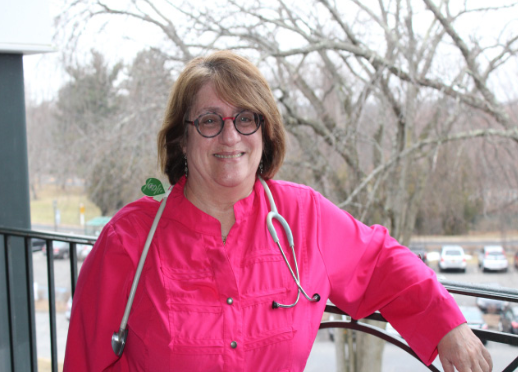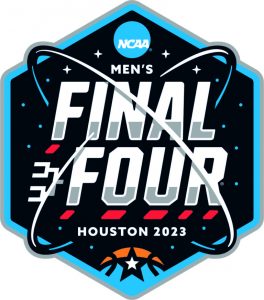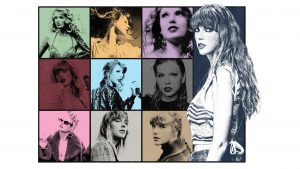Last updated on Feb 8, 2018
By Jada Butler
News Editor
In December 2017, the New York State Department of Education approved Long Island University’s request to institute a veterinary technology program at LIU Post. The program, which is set to begin in the fall of 2018, is one of only 21 accredited, four-year integrated undergraduate degree programs offered nationally in veterinary technology. The program offers a bachelor of science degree, and graduates will be eligible to take the national licensing examination to become licensed veterinary technologists.

Robin Sturtz, director of the vet tech program.
A veterinary technologist assists veterinarians in, among other things, surgery and recording patient history and research. A veterinary technologist is different from a veterinary technician, which only requires two years of education in an associate’s degree of applied science, rather than a bachelor of science, according to Robin Sturtz, the newly appointed director of the vet tech program.
Sturtz was chosen by a search committee consisting of animal facilities director, Christopher McAllister and Stacy Gropack, dean of the school of health professions and nursing. Sturtz, a 2004 graduate of the College of Veterinary Medicine of Georgia, has been involved with vet tech education for over 10 years at CUNY and Mercy College, and currently works in clinical practice as an associate veterinarian at the Long Island Cat Hospital in Williston Park. “I love teaching. I love our students because vet tech students tend to be very focused, they like what they’re learning and it makes it a lot of fun for a teacher when you have that,” Sturtz said, explaining her experience at her previous schools.
The program, which will be housed in the school of health professions and nursing, will include education on different types of animals, and hands-on experience both inside and outside the classroom. LIU has partnered with the North Shore Animal League (NSAL) in Port Washington to aid students in their education. At NSAL, students will be able to observe the workings of a large animal shelter and its hospital. NSAL is also offering externship opportunities for students when they reach that part of the program, according to Sturtz.
Students are required to spend over 500 hours working on local farms, zoos, animal hospitals, shelters, and research facilities to get “hands-on” clinical experience, that will later aid them in their clinical internships. Live animals will not be used in the classroom setting. Students will be able to work with live animals during their time off campus.
Sturtz and Gropack hope to fill the entering class for the program with at least 40 students. So far, the program has received around 15 applications, according to Gropack. The program will be open for incoming freshmen and transfer students. Applicants should have a “desire to work with animals and have a strong science background,” Sturtz said.
Space is being renovated in the Life Sciences Hall to accommodate the program. “Our students will be able to study on campus using the latest in imaging equipment, mannequins and models,” Sturtz said.
Much like the patient mannequins in the nursing program at Post, these vet tech mannequins are combined with a software that simulate “check-up” scenarios, and even have a heartbeat. “We want our students to be well-rounded, well educated, and well trained,” Sturtz said.
Veterinary technologists have a broader education than technicians, and can hold management and supervisory jobs. The program will start with introductory classes on basic animal education before leading to more advanced, master classes. Students can also narrow their focus through electives in four areas: research, rehabilitation, business, and behavior. Career options after graduation are very diverse. “Veterinary technologists work in private practice, corporate practice, shelters, research, industry, the military, zoos, and for the federal government,” Sturtz said.
There are 21 veterinary technology programs in the United States, and just 14 accredited programs in the state of N.Y., Sturtz said, and a high demand for vet techs in the country. Employment of veterinary technologists is projected to grow 20 percent from 2016 to 2026, faster than the average for all occupations, according to Gropack, as veterinarians continue to utilize technologists to support their practices, do general care and lab work.
The program is expected to be “sufficiently funded,” with expenses for equipment and trips being covered, according to Gropack. The budget for the program is still being calculated, yet “the university and President have made a commitment to funding the program,” Gropack said.
Corrections: In the Jan. 24 issue, the Pioneer incorrectly reported that the new veterinary technology program is accredited. The program is not yet accredited, and will be only after an application process with the American Veterinary Medical Association. The program has been registered with New York State, but is not yet nationally accredited. The Pioneer also incorrectly reported that there are 21 four year integrated undergraduate veterinary technology programs in the United States. There are actually 210, including associate programs.







Be First to Comment